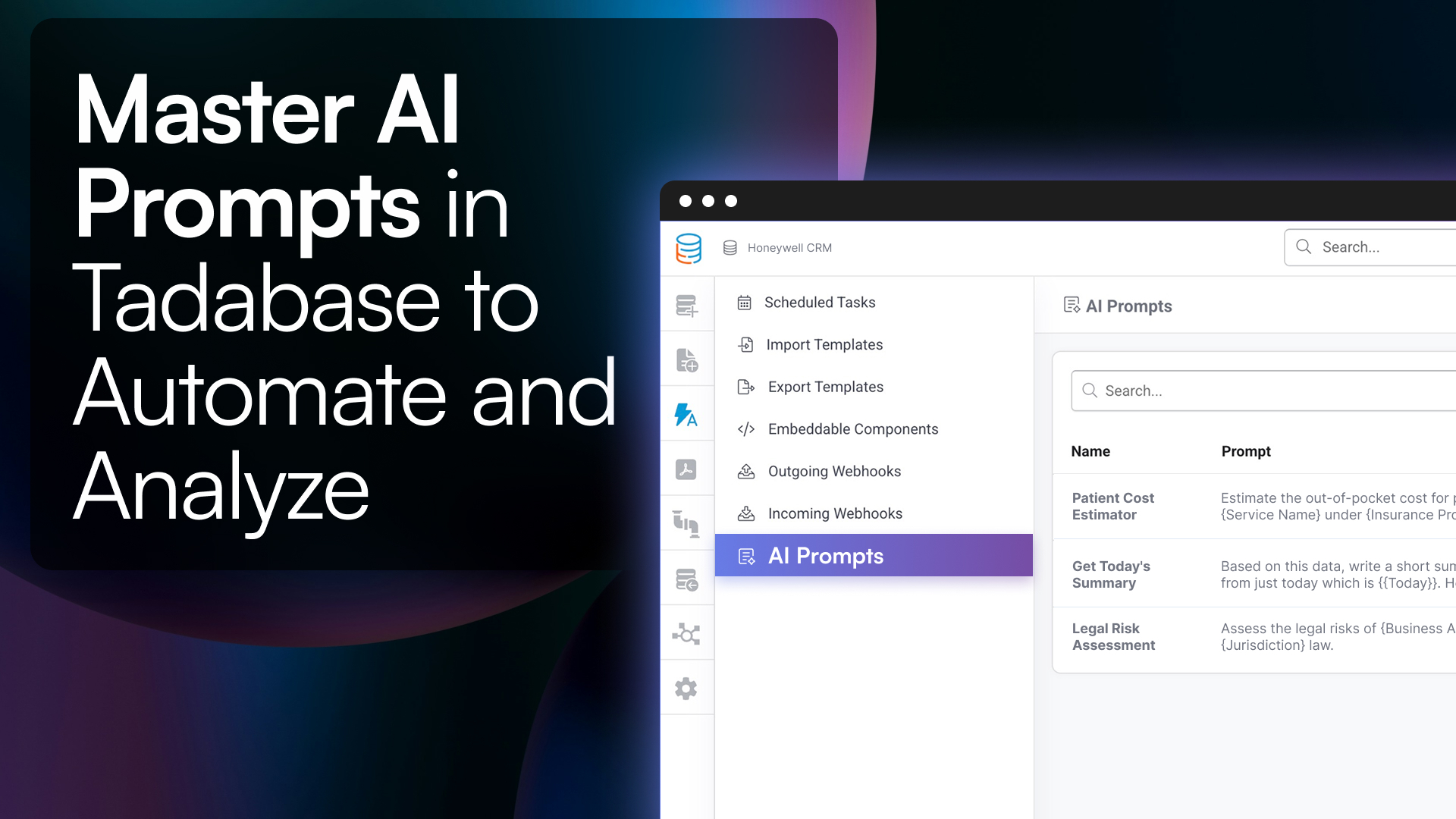Explore the behind-the-scenes tools that keep your business running smoothly.
Introduction
Internal tools are purpose-built applications that streamline a company’s operations, automate tasks, and improve team productivity. Unlike off-the-shelf solutions, these tools are customized to fit unique workflows, giving businesses more control over processes and data. From admin panels to workflow automation, internal tools empower teams to work smarter and faster, making them essential for any growing organization. In this guide, we’ll explore the types, benefits, and best practices for implementing internal tools effectively.
Understanding Internal Tools
Definition
Internal tools are custom-built software applications used within a company to streamline specific tasks, automate workflows, and improve team efficiency. These tools often range from simple employee directories to complex database management systems, helping companies optimize operations without needing third-party solutions.
Purpose
Internal tools are designed to address company-specific needs that off-the-shelf solutions may not fully cover. They enable businesses to customize workflows, enhance data management, and minimize repetitive tasks.
Example: A customer support team may use an internal tool that integrates real-time data from CRM, ticketing systems, and user analytics to streamline troubleshooting and reporting.
Types of Internal Tools
-
Database Management Systems
Tools for creating, managing, and accessing databases are essential for data-driven companies. Platforms like Tadabase allow non-technical users to query databases and generate reports effortlessly. -
Admin Panels
Used to monitor and control various aspects of operations, admin panels help teams manage users, products, content, and permissions securely. These tools can also support compliance tracking and access management. -
Dashboards and Analytics
Custom dashboards present real-time data across departments, enabling leaders to make informed decisions. Unlike generic dashboards, custom dashboards reflect specific metrics and KPIs relevant to the organization. -
Task and Workflow Automation Tools
Automating repetitive tasks like data entry or report generation frees up employees’ time. Workflow automation tools also reduce human error and maintain consistency across processes. -
Employee Communication and Collaboration Tools
Internal messaging, document sharing, and project collaboration systems help remote and hybrid teams stay connected and synchronized.
Benefits of Internal Tools
-
Enhanced Productivity
Internal tools streamline workflows, allowing employees to focus on high-impact work instead of repetitive tasks. This has a measurable effect on productivity and overall business agility. -
Data Control and Security
Organizations retain complete control over data and security with internal tools, crucial for sectors with stringent compliance requirements, like healthcare and finance. -
Cost Efficiency
While custom internal tools have upfront development costs, they often save money long-term by eliminating subscription fees for multiple external applications. They also reduce reliance on multiple software vendors, which can be costly. -
Improved User Experience
Internal tools are designed with end-users in mind, reflecting the specific needs of employees and stakeholders. This customization leads to a better user experience, as tools are created to be intuitive for the company’s workflows.
Example: An e-commerce business can create an internal inventory management tool that aligns precisely with its supply chain, providing features off-the-shelf tools may lack.
Key Technologies in Internal Tool Development
Internal tools often use a combination of technologies to support backend processing, user interfaces, and data integrations:
- JavaScript and SQL: JavaScript is widely used for frontend logic, while SQL powers backend database queries.
- Low-code/no-code platforms: Platforms like Tadabase offer a low-code approach, allowing even non-developers to build functional internal tools without in-depth programming knowledge.
- API Integrations: APIs allow internal tools to connect with external platforms, ensuring seamless data sharing across departments or systems.
Best Practices for Building Effective Internal Tools
-
Define Clear Objectives
Understand the specific problem each tool aims to solve. Involve end-users in the planning process to ensure the tool aligns with their workflows. -
Choose Scalable Technology
Select a platform or development framework that allows for scaling as the company grows. Tadabase, for instance, supports scalability through modular design. -
Prioritize Security
Internal tools often manage sensitive data. Implement role-based access controls, data encryption, and regular audits to maintain data integrity and prevent unauthorized access. -
Iterate and Improve
Gather feedback from users regularly to enhance tool functionality. Agile development methods can help incorporate feedback quickly, keeping the tool relevant as needs evolve.
Choosing a Platform for Internal Tools
When selecting a platform, consider factors such as ease of use, customization options, integration capabilities, and user support.
Why Tadabase?
Tadabase is ideal for building flexible, scalable internal tools with minimal coding. It supports:
- Custom workflows and automation for various industries.
- Integration with external data sources to keep all your data centralized.
- Role-based access controls for enhanced security.
Best Options for Building Internal Tools
Selecting the right platform to develop internal tools can significantly impact how smoothly they function and integrate into your operations. Below are some of the top platforms for building robust internal tools, with Tadabase as the leading choice:
1. Tadabase 
Tadabase is a low-code platform designed to empower non-developers and technical users alike. It enables companies to build custom, scalable internal tools with ease, featuring:
- Custom Workflows: Create tailored workflows that match specific business processes across different industries.
- Data Integration: Connect seamlessly with external data sources to centralize information and improve data accessibility.
- Role-Based Access Controls: Implement granular access permissions to protect sensitive information and maintain compliance.
- Low-Code/No-Code Flexibility: Users can quickly develop applications without extensive programming knowledge, making it a versatile solution for teams of all technical levels.
Explore Tadabase’s capabilities for internal tools here.
2. Retool 
Known for its intuitive drag-and-drop interface, Retool is ideal for creating quick custom applications. It’s well-suited for technical teams familiar with SQL and JavaScript, allowing for:
- Rapid building of admin panels, dashboards, and other internal applications.
- Strong API integrations that facilitate connection with existing data sources.
3. Budibase 
Budibase is another low-code platform geared toward internal tools, with features that support automation and integrations. It offers:
- Tools for automating repetitive tasks.
- Flexible customization options, although more suited for small to medium-sized businesses.
4. DronaHQ 
DronaHQ combines low-code functionality with pre-built templates for internal tools, enabling companies to create applications quickly. It provides:
- Workflow automation and built-in UI components.
- Integrations with various third-party apps for better connectivity.
5. Forest Admin 
Forest Admin is tailored for companies that need to manage complex back-office applications with structured data handling capabilities. It offers:
- Pre-built layouts for admin panels and dashboards.
- A focus on data management with strong security features.
Internal Tools vs. Customer-Facing Tools
Understanding the distinction between internal and customer-facing tools is crucial for setting development priorities and managing resources effectively. Here’s a quick breakdown of how they differ:
Internal Tools
- Purpose: Built for employees and internal teams to streamline tasks, manage data, and optimize workflows.
- Customization: Typically tailored closely to specific company processes, making them highly customizable.
- Access and Security: Restricted to internal use with access controls and security measures aligned with company policies.
- Examples: Admin panels, inventory management systems, and HR dashboards.
Customer-Facing Tools
- Purpose: Created to interact directly with customers, enhancing their experience and engagement with the company.
- Customization: Often designed to accommodate a wide audience, focusing on usability, scalability, and UX.
- Access and Security: Open to external users, with additional layers of security for user authentication and data privacy.
- Examples: E-commerce portals, customer support chat interfaces, and account management systems.
Both types of tools can be built using platforms like Tadabase, which allows businesses to create both internal and customer-facing applications within a single framework, ensuring consistency and efficiency across different tool types.
Frequently Asked Questions
What is the difference between internal and external tools?
Internal tools are built for and used within the organization, addressing specific internal needs, while external tools are often customer-facing or general-purpose solutions designed for broader markets.
Are internal tools expensive to develop?
While initial costs can be high, internal tools often prove cost-effective by reducing reliance on external solutions and enhancing efficiency. Platforms like Tadabase reduce costs further with a low-code approach.
What skills are needed to develop internal tools?
Development skills depend on the complexity. While traditional coding skills are useful, platforms like Tadabase enable non-technical users to build and manage tools with a low-code interface.
Conclusion
Internal tools are crucial for businesses looking to enhance efficiency, data control, and user experience. With platforms like Tadabase, organizations can create scalable, secure, and tailored solutions that meet their unique requirements—without extensive coding.








